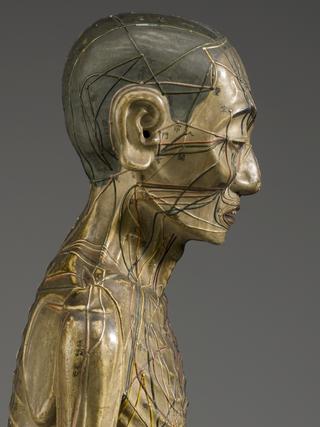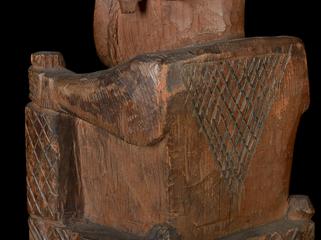




Needles for the Insertion Tube method of acupuncture, also known as Kanshino, consisting of a packet of nine fine-graded ion needles, with silver heads and gold shafts and a packet of seven all silver needles, from the surgery of a British practitioner c.1996, handmade by Kinichi Aoki, Tokyo, Japanese, 1980-1990.
‘Insertion tube’ is a method of acupuncture. The needle is guided through the thin shaft of the insertion tube and rested over the acupoint. It is then tapped gently to embed it in the skin. The tube is removed leaving the needle in place. It can then be adjusted. This collection of ‘kanshino’ needles consists of nine fine-graded iron needles with silver heads and gold shafts and seven all silver needles. Early acupuncture needles were made of stone chiselled into a fine point. Bamboo, iron, gold, silver and alloys have all been used too. The choice of needle depends on the patient’s needs, the amount of stimulation required and the technique used.
Details
- Category:
- Asian Medicine
- Object Number:
- 2002-440
- Measurements:
-
smaller packet: 2 mm x 27 mm x 82 mm, .003 kg
larger packet: 3 mm x 33 mm x 84 mm, .003 kg
- type:
- acupuncture needle
- credit:
- Kelley, R.




